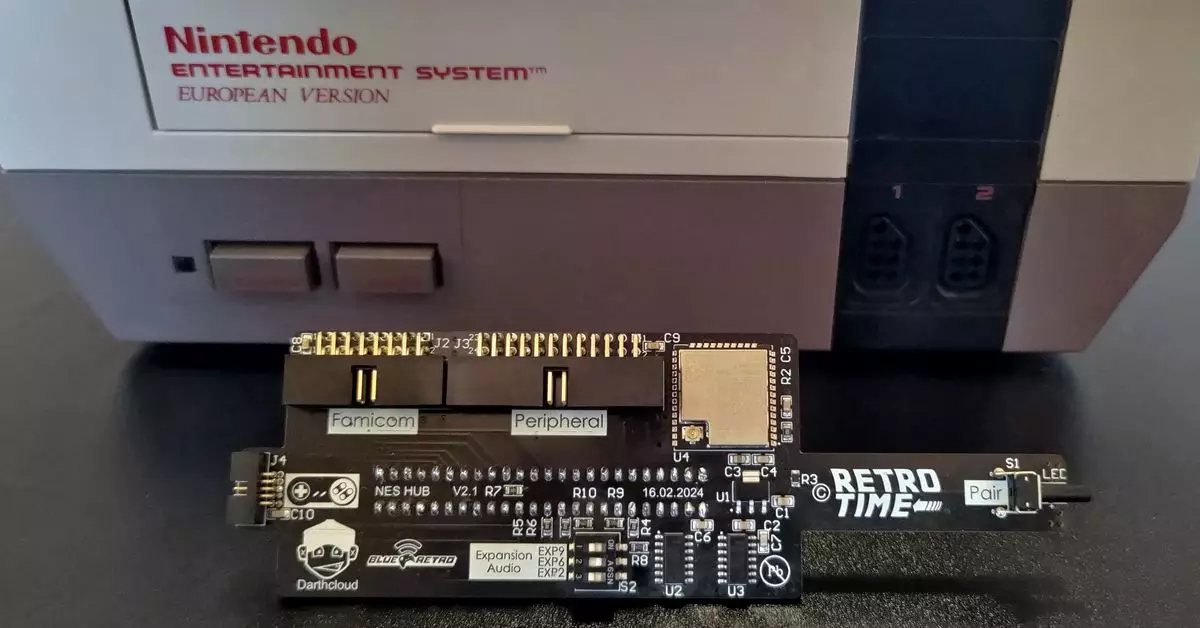As the nostalgia for vintage gaming continues to grow, innovations that breathe new life into classic consoles are becoming increasingly sought after. One such innovation is RetroTime’s NES Hub, which connects to the underutilized expansion port on the Nintendo Entertainment System (NES). This clever device not only vouches for the longevity of an iconic gaming system but also adds modern features like Bluetooth connectivity, allowing for wireless multiplayer gaming in a way that was never possible during its heyday.
The NES Hub: Features and Functionality
The NES Hub is designed to connect seamlessly to the NES without requiring any hardware modifications or soldering. With a price point of approximately $57.28, this accessory is currently available for preorder and is expected to ship as early as December 2024. The installation process is user-friendly; the NES Hub simply snaps into the expansion port, and a Bluetooth antenna is attached to facilitate wireless connections. This innovative design makes it accessible for enthusiasts who may not have technical expertise, thus broadening the appeal of retro gaming.
What sets the NES Hub apart is its ability to support up to four wireless controllers, effectively expanding the console’s multiplayer capability. This feature echoes the functionality of the NES Four Score accessory from 1990, which allowed players to connect multiple wired controllers, albeit with limited game support. While only a handful of NES titles supported four players, the NES Hub expands this functionality, allowing a range of compatible games to be enjoyed in a modern, wireless format.
In addition to its multiplayer capabilities, the NES Hub introduces a special mode to enhance the audio output for select Famicom games. By allowing more audio channels, players can experience a richer soundtrack, making the gameplay experience more immersive and enjoyable. This feature alone acknowledges the importance of audio in gaming, something that retro consoles often compromised due to technological limitations of their time.
The NES Hub also presents opportunities for further expansion with additional accessories. For instance, a $26.03 add-on permits connectivity with Super Nintendo controllers and peripherals designed for the Japanese Famicom system. This flexibility not only fosters nostalgia but also invites a broader range of gaming experiences, catering to different preferences and styles.
As we step further into an age dominated by high-definition graphics and complex gameplay mechanics, it is products like the NES Hub that remind us of the charm and simplicity of retro gaming. The ability to connect modern peripherals to a nearly 40-year-old console signifies not just technological advancement, but also a deep appreciation for gaming history.
Innovations such as these ensure that the spirit of classic gaming thrives, creating a bridge between generations of gamers. With the NES Hub, RetroTime is instigating a renewed interest in the NES, demonstrating that even long-forgotten technology has room for growth and improvement in our modern gaming landscape. As we anticipate the future release of the NES Hub, one thing is clear: retro gaming is far from being a thing of the past; instead, it is evolving in exciting directions.


Leave a Reply